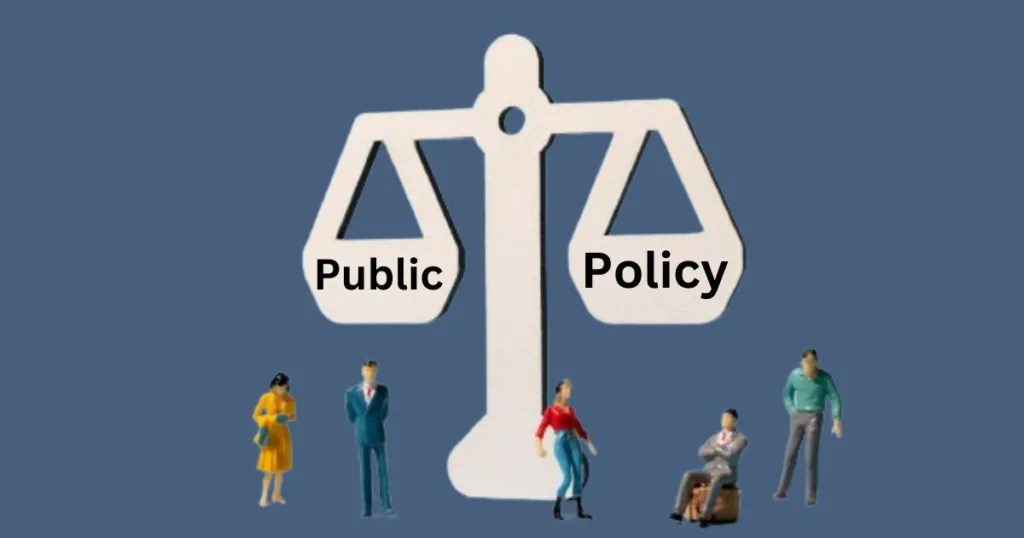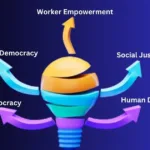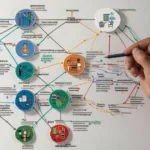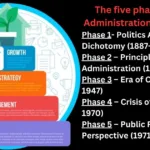In this blog post you will get answer of 5 Phases of Evolution of Public Administration. “Public administration, the backbone of governance and public service delivery, has traversed a fascinating journey of evolution over the centuries. From its humble beginnings in ancient civilizations to its modern-day complexities, the field has continuously adapted to meet the evolving needs of society. In this blog post, we explore the five key phases that have defined the evolution of public administration, tracing its trajectory from the early politics-administration dichotomy to the contemporary public policy perspective.
By delving into these phases, we gain insights into the enduring relevance and significance of public administration in shaping the course of governance and public service provision.” Public administration, as a field of study and practice, has undergone significant evolution over the years. From its early roots in ancient civilizations to its modern-day complexities, the discipline has continuously adapted to changing societal needs, political ideologies, and technological advancements.
This introduction sets the stage for a comprehensive exploration of the five phases outlined in the blog post, providing readers with a clear understanding of the broader context and significance of the topic.
Key Points to Cover: 5 Phases of Evolution of Public Administration

1. Historical Context:
Begin by briefly discussing the origins of public administration, highlighting its roots in ancient civilizations such as Mesopotamia, Greece, and Rome. Mention the administrative systems developed by these civilizations and their influence on later practices.
2. Modern Evolution:
Transition to the more recent evolution of public administration, focusing on key milestones and paradigm shifts that have shaped the field. This could include the emergence of formal bureaucratic systems during the Renaissance and Enlightenment periods, as well as the industrialization era’s impact on administrative practices.
3. Emergence of Academic Discipline:
Highlight the establishment of public administration as an academic discipline in the late 19th and early 20th centuries, with scholars like Woodrow Wilson and Max Weber laying the groundwork for systematic study and analysis.
4. Changing Paradigms:
Discuss how public administration has evolved in response to changing political ideologies, societal expectations, and global dynamics. Mention notable shifts such as the rise of New Public Management in the late 20th century and the increasing emphasis on governance and public policy in recent years.
5. Relevance Today:
Conclude the introduction by emphasizing the ongoing relevance and importance of public administration in addressing contemporary challenges such as globalization, technological innovation, and public sector reform.
People Also Read: Public Administration and It’s Meaning, Definition, Features & Purpose
1. Politics Administration Dichotomy (1887-1926)
Explanation of the Concept:
The Politics-Administration Dichotomy, often attributed to Woodrow Wilson, delineates the separation between politics and administration within governmental structures.
According to this concept, politics pertains to the formulation of policies and decision-making, while administration involves the implementation and execution of those policies.
Wilson argued for a clear distinction between these two realms to ensure efficiency, expertise, and accountability in governance.
The idea was to insulate public administrators from political influences, allowing them to focus on technical expertise and professional management.
Key Figures and Their Contributions:
Woodrow Wilson:
As one of the key proponents of the Politics-Administration Dichotomy, Wilson’s seminal essay “The Study of Administration” (1887) laid the groundwork for modern public administration theory. He advocated for a professional and scientific approach to administration, separate from the realm of politics, to improve efficiency and effectiveness in government operations.
Frank J. Goodnow:
Goodnow expanded upon Wilson’s ideas, emphasizing the need for a specialized bureaucracy guided by merit-based principles. His work, particularly in “Politics and Administration” (1900), further articulated the concept of separating politics from administration to ensure impartiality and expertise in governance.
Impact on the Field of Public Administration:
The Politics-Administration Dichotomy had a profound impact on the development of public administration as a field of study and practice:
Professionalization:
The concept contributed to the professionalization of public administration by emphasizing the importance of specialized knowledge and skills in bureaucratic management.
Administrative Reform:
It spurred efforts to reform administrative practices, promoting merit-based recruitment, civil service reforms, and the adoption of scientific management principles.
Role Clarity:
By delineating the roles of politicians and administrators, the dichotomy helped clarify responsibilities and fostered accountability within government institutions.
Critique and Evolution:
Over time, the dichotomy faced criticism for oversimplifying the complexities of governance and failing to account for the inherent interplay between politics and administration.
Subsequent theories, such as New Public Management and the New Governance approach, sought to integrate political and administrative functions more seamlessly while maintaining principles of efficiency and accountability.
In summary, the Politics-Administration Dichotomy introduced by Wilson and further developed by scholars like Goodnow laid the foundation for modern public administration theory and practice, shaping notions of professionalism, accountability, and the relationship between politics and administration in governance structures.
2. Principles of Administration (1927-1937)
Emergence of Principles such as Efficiency, Effectiveness, and Economy:

During the period from 1927 to 1937, there was a significant emphasis on identifying and articulating principles of administration aimed at improving the efficiency, effectiveness, and economy of government operations.
These principles sought to enhance the performance and outcomes of public administration by guiding decision-making and managerial practices. Key principles that emerged during this period include:
i) Efficiency:
The principle of efficiency emphasizes the optimal use of resources to achieve desired outcomes. This involves minimizing waste, reducing costs, and maximizing productivity in the delivery of public services and programs.
ii) Effectiveness:
Effectiveness pertains to the ability of public administration to achieve its stated objectives and goals. Administrators were encouraged to focus on results and outcomes, ensuring that policies and programs produced the intended impact on society.
iii) Economy:
Economy refers to the prudent and judicious use of resources to avoid unnecessary expenditures and ensure value for money. Administrators were tasked with seeking cost-effective solutions and streamlining processes to achieve desired outcomes without compromising quality.
Notable Theories and Frameworks:
During this period, several notable theories and frameworks emerged that contributed to the understanding and application of principles of administration:
i) Scientific Management:
Developed by Frederick Taylor, scientific management focused on optimizing efficiency and productivity through systematic analysis and standardization of work processes.
Taylor’s principles of management, such as division of labor and time-motion studies, influenced administrative practices in both the public and private sectors.
ii) Administrative Management Theory:
Pioneered by Henri Fayol, administrative management theory emphasized the general principles of management applicable to all types of organizations.
Fayol’s principles, including unity of command, scalar chain, and division of work, provided a framework for organizing and managing administrative functions.
iii) Principle of Administration:
Scholars like Luther Gulick and Lyndall Urwick contributed to the development of principles of administration, advocating for the principles of unity of command, span of control, coordination, and specialization.
These principles aimed to enhance organizational efficiency and effectiveness in public administration.
Application in Governance:
The principles of administration formulated during this period found widespread application in governance, influencing decision-making, organizational design, and managerial practices in public agencies:
i) Policy Implementation:
Government agencies applied principles of efficiency, effectiveness, and economy in the implementation of policies and programs, aiming to achieve desired outcomes while minimizing costs and maximizing benefits.
ii) Organizational Design:
Principles of administration guided the design and structure of government organizations, with a focus on enhancing efficiency through specialization, coordination, and clear lines of authority.
iii) Performance Management:
Governments adopted performance management systems to monitor and evaluate the performance of public agencies based on key principles such as efficiency, effectiveness, and economy.
These systems facilitated accountability and continuous improvement in government operations.
In summary, the period from 1927 to 1937 witnessed the emergence of key principles of administration, driven by the need to improve the efficiency, effectiveness, and economy of government operations.
Notable theories and frameworks provided guidance for applying these principles in governance, influencing decision-making and organizational practices in public administration.
3. The Era of Challenges (1938-1947)

External and Internal Challenges Faced by Public Administration:
During the era of 1938 to 1947, public administration encountered a myriad of external and internal challenges that tested the resilience and adaptability of governmental structures:
1. External Challenges:
i) Global Conflict:
The outbreak of World War II presented unprecedented challenges for public administration, as governments grappled with mobilizing resources, managing logistics, and coordinating efforts to support war efforts.
ii) Economic Turmoil:
The Great Depression and its aftermath continued to exert pressure on public administration, with governments facing the daunting task of addressing widespread unemployment, poverty, and economic instability.
iii) Technological Advances:
Rapid technological advancements posed both opportunities and challenges for public administration, requiring governments to adapt to new methods of communication, transportation, and industrial production.
2. Internal Challenges:
i) Bureaucratic Inertia:
Governmental bureaucracies often struggled to adapt to changing circumstances, hindered by bureaucratic red tape, outdated procedures, and resistance to innovation.
ii) Political Instability:
Political upheavals, ideological conflicts, and power struggles within governments posed challenges to effective decision-making and governance, leading to inefficiencies and policy gridlock.
iii) Social Unrest:
Rising social tensions, labor disputes, and demands for reform from various segments of society placed additional strains on public administration, necessitating responses to address grievances and maintain social cohesion.
Responses and Adaptations to Changing Societal Needs:
In response to these challenges, public administration underwent significant transformations aimed at addressing evolving societal needs and dynamics:
1. Reform Initiatives:
Governments implemented reform initiatives to modernize administrative practices, streamline bureaucracies, and improve efficiency and effectiveness in service delivery.
This included efforts to rationalize administrative structures, enhance accountability mechanisms, and foster innovation in governance.
2. War-Time Mobilization:
During World War II, public administration played a central role in coordinating war-time mobilization efforts, including rationing, industrial production, recruitment, and allocation of resources.
Governments adopted centralized planning mechanisms and collaborated closely with private sector stakeholders to meet the demands of war.
3. Social Welfare Programs:
In response to the social and economic challenges of the era, governments expanded social welfare programs to provide assistance to vulnerable populations, stimulate economic recovery, and promote social equity.
This included the introduction of unemployment benefits, social security programs, and public works projects to alleviate hardship and stimulate demand.
4. Technological Integration:
Public administration embraced technological advancements to improve efficiency and communication within government agencies.
This included the adoption of new technologies such as telecommunication systems, computerization, and data processing techniques to streamline administrative processes and enhance decision-making capabilities.
In summary, the era of 1938 to 1947 was characterized by a confluence of external and internal challenges that tested the capacity of public administration to adapt and respond to changing societal needs.
Governments implemented various reforms, mobilization efforts, and social welfare programs to address these challenges, laying the groundwork for the modernization and transformation of public administration in the post-war period.
4. Crisis of Identity (1948-1970)
Shifts in Ideological and Philosophical Underpinnings:

During the period of 1948 to 1970, public administration experienced significant shifts in ideological and philosophical perspectives, leading to a crisis of identity within the field:
i) Post-War Reconstruction:
In the aftermath of World War II, there was a growing emphasis on reconstruction and development, with governments adopting Keynesian economic policies and welfare state measures to stimulate growth and address social inequalities.
ii) Cold War Dynamics:
The Cold War rivalry between the United States and the Soviet Union influenced ideological debates within public administration, with contrasting perspectives on the role of government, economic management, and individual rights.
iii) Decolonization Movements:
The wave of decolonization in Africa, Asia, and Latin America challenged traditional notions of governance and administration, prompting discussions on self-determination, sovereignty, and post-colonial state-building.
Debates on the Role and Scope of Public Administration:
The crisis of identity in public administration gave rise to intense debates on the role and scope of government, bureaucracy, and public service delivery:
i) Scope of Government:
Debates centered on the appropriate role of government in society, with proponents of limited government advocating for reduced state intervention and deregulation, while supporters of an active government called for expanded public services and social welfare programs.
ii) Bureaucratic Efficiency vs. Democratic Accountability:
There were tensions between the pursuit of bureaucratic efficiency and the imperative of democratic accountability, as governments sought to balance the need for efficient administration with the principles of transparency, responsiveness, and citizen participation.
iii) Social Equity and Justice:
Discussions focused on the role of public administration in promoting social equity, justice, and inclusion, with calls for greater attention to marginalized communities, minority rights, and distributive justice in policy-making and implementation.
Efforts to Redefine its Purpose and Function:
In response to the crisis of identity, efforts were made to redefine the purpose and function of public administration to address emerging challenges and societal demands:
i) New Public Administration:
The emergence of New Public Administration (NPA) sought to reform bureaucratic practices and enhance responsiveness to societal needs.
NPA emphasized citizen-centric approaches, participatory decision-making, and social equity considerations in public policy and administration.
ii) Management Reforms:
Governments implemented management reforms aimed at improving the efficiency, effectiveness, and accountability of public administration.
This included initiatives such as performance management systems, outcome-based budgeting, and quality improvement programs to enhance service delivery and organizational performance.
iii) Policy Innovation:
Public administration embraced policy innovation and experimentation to address complex social problems and promote sustainable development.
This involved the adoption of new policy instruments, collaborative governance models, and evidence-based practices to tackle issues such as environmental sustainability, urbanization, and healthcare delivery.
In summary, the crisis of identity in public administration during the period of 1948 to 1970 was characterized by profound shifts in ideological perspectives, debates on the role and scope of government, and efforts to redefine the purpose and function of public administration in response to changing societal dynamics and governance challenges.
5. Public Policy Perspective (1971-Onwards)
Emphasis on Policy Formulation and Implementation:

During the period from 1971 onwards, there was a notable shift towards a public policy perspective in public administration, placing increased emphasis on both the formulation and implementation of policies:
i) Policy Formulation:
Governments began to adopt a more systematic and evidence-based approach to policy formulation, incorporating techniques such as policy analysis, evaluation, and forecasting.
Policymakers sought to identify emerging challenges, set policy goals, and design strategies to address societal needs and priorities.
ii) Policy Implementation:
Alongside policy formulation, there was a growing recognition of the importance of effective policy implementation in achieving desired outcomes.
Public administrators played a crucial role in translating policy objectives into action, coordinating interdepartmental efforts, mobilizing resources, and monitoring progress towards policy goals.
Integration of Public Administration with Policy Studies:
The public policy perspective fostered closer integration between public administration and policy studies, leading to interdisciplinary collaborations and theoretical advancements:
i) Interdisciplinary Approach:
Scholars and practitioners increasingly recognized the interdisciplinary nature of public policy, drawing insights from fields such as political science, economics, sociology, and law to inform policy analysis and decision-making.
ii) Policy Analysis Tools:
The integration of public administration with policy studies led to the development of advanced analytical tools and methodologies for policy analysis, including cost-benefit analysis, scenario planning, and stakeholder mapping.
These tools helped policymakers and administrators assess policy options, anticipate consequences, and make informed decisions.
iii) Institutional Arrangements:
Governments established specialized institutions and agencies dedicated to policy research, analysis, and evaluation.
These institutions served as hubs for generating policy-relevant knowledge, conducting research, and providing policy advice to decision-makers.
Implications for Governance and Decision-Making:
The public policy perspective had significant implications for governance structures, processes, and decision-making:
i) Policy Capacity:
Governments invested in strengthening their policy capacity by building analytical capabilities, enhancing data infrastructure, and fostering a culture of evidence-based policymaking.
This enabled policymakers to make informed decisions grounded in rigorous analysis and empirical evidence.
ii) Policy Coordination:
Effective policy coordination became increasingly important as governments addressed complex and interconnected policy challenges.
Public administrators played a central role in coordinating cross-cutting policies, fostering interagency collaboration, and aligning efforts across different levels of government.
iii) Policy Evaluation and Learning:
There was a growing emphasis on policy evaluation and learning to assess the effectiveness of policies, identify lessons learned, and improve future policy design and implementation.
Governments established mechanisms for conducting rigorous evaluations, soliciting feedback from stakeholders, and adapting policies based on evidence and feedback.
In summary, the public policy perspective ushered in a new era of governance characterized by a systematic approach to policy formulation and implementation, closer integration between public administration and policy studies, and enhanced capacity for evidence-based decision-making.
This perspective emphasized the importance of rigorous analysis, interdisciplinary collaboration, and adaptive governance in addressing complex policy challenges facing modern societies.
Recent Trends in Public Administration:

Overview of Contemporary Developments:
In recent years, public administration has witnessed several notable trends and developments that reflect evolving societal needs, technological advancements, and governance challenges:
i) Digital Transformation:
Governments around the world have embarked on digital transformation initiatives aimed at leveraging technology to enhance service delivery, improve administrative efficiency, and promote citizen engagement.
This includes the adoption of e-government platforms, digital service delivery channels, and data-driven decision-making processes.
ii) Collaborative Governance:
There is a growing recognition of the need for collaborative approaches to governance, involving partnerships between government agencies, civil society organizations, private sector stakeholders, and citizens.
Collaborative governance models promote inclusivity, transparency, and participatory decision-making in policy formulation and implementation.
iii) Evidence-Based Policy Making:
Governments are increasingly prioritizing evidence-based policy making, emphasizing the use of empirical research, data analysis, and evaluation to inform policy decisions.
This trend reflects a shift towards more rigorous and systematic approaches to policy design, implementation, and evaluation.
Examples of Innovative Approaches and Practices:
Several innovative approaches and practices have emerged in public administration in response to contemporary challenges:
i) Open Data Initiatives:
Governments are launching open data initiatives to make government data more accessible and transparent to the public.
Open data platforms enable citizens, researchers, and businesses to access and analyze government data, fostering innovation, accountability, and civic engagement.
ii) Agile and Lean Methodologies:
Public sector organizations are adopting agile and lean methodologies borrowed from the private sector to improve organizational agility, responsiveness, and efficiency.
These methodologies emphasize iterative development, customer-centricity, and continuous improvement in service delivery.
iii) Social Innovation Labs:
Governments are establishing social innovation labs and incubators to facilitate co-creation and experimentation in addressing complex societal challenges.
These labs bring together diverse stakeholders to develop innovative solutions, test prototypes, and scale successful interventions in areas such as healthcare, education, and sustainability.
Discussion on Technology’s Impact on Public Administration:
Technology has profoundly transformed public administration in recent years, reshaping governance processes, service delivery models, and citizen interactions:
i) Digital Governance:
The digitization of government services has enabled citizens to access services online, anytime, anywhere.
Digital governance initiatives streamline administrative processes, reduce bureaucratic red tape, and enhance the accessibility and responsiveness of government services.
ii) Data Analytics and Predictive Modeling:
Governments are harnessing the power of big data analytics and predictive modeling to identify patterns, trends, and insights that inform decision-making and policy formulation.
These technologies enable governments to anticipate emerging challenges, allocate resources more effectively, and tailor interventions to specific needs.
iii) Blockchain and Distributed Ledger Technology:
Blockchain and distributed ledger technology are being explored for their potential to enhance transparency, security, and accountability in public administration.
These technologies enable secure and tamper-proof record-keeping, facilitating trust-based transactions and reducing the risk of fraud and corruption.
In summary, recent trends in public administration reflect a shift towards digitalization, collaboration, and evidence-based decision-making.
Innovative approaches and practices, coupled with the transformative impact of technology, are reshaping governance processes and enhancing the effectiveness and responsiveness of public administration in addressing contemporary challenges.
People Also Read: New Public Administration: Positive Revolution in Governance
Conclusion:
Public administration has undergone a remarkable evolutionary journey, marked by distinct phases that have shaped its theory, practice, and relevance in governance.
From the early politics-administration dichotomy to the contemporary emphasis on evidence-based policy making and digital governance, each phase has contributed to the development and transformation of public administration in response to changing societal needs and governance challenges.
Summarization of the Evolutionary Phases:
Throughout its evolution, public administration has experienced significant shifts in ideology, philosophy, and practice:
1. Politics-Administration Dichotomy (1887-1926):
The era of the politics-administration dichotomy laid the groundwork for modern public administration theory, emphasizing the separation of politics and administration to promote efficiency and professionalism in governance.
2. Principles of Administration (1927-1937):
The emergence of principles such as efficiency, effectiveness, and economy guided administrative practices and organizational design, fostering accountability and performance in public administration.
3. The Era of Challenges (1938-1947):
External and internal challenges, including global conflict, economic turmoil, and technological advances, tested the resilience of public administration, prompting reform efforts and policy innovation.
4. Crisis of Identity (1948-1970): Shifts in ideological perspectives, debates on the role of government, and efforts to redefine the purpose and function of public administration characterized this period, leading to significant theoretical and practical advancements.
5. Public Policy Perspective (1971-Onwards):
The adoption of a public policy perspective brought increased attention to policy formulation, implementation, and evaluation, fostering evidence-based decision making and interdisciplinary collaboration in public administration.
Reflection on the Enduring Relevance of Public Administration:
Despite the evolution of governance models and the emergence of new challenges, the enduring relevance of public administration remains evident:
1. Service Delivery:
Public administration plays a vital role in delivering essential services to citizens, ensuring the effective and equitable distribution of resources and benefits within society.
2. Policy Implementation:
Public administrators translate policy objectives into action, facilitating the implementation of government initiatives and programs to address societal needs and priorities.
3. Accountability and Transparency:
Public administration promotes accountability and transparency in governance, fostering trust and legitimacy through responsive and accountable decision-making processes.
4. Innovation and Adaptation:
Public administrators innovate and adapt to changing circumstances, leveraging technology, data, and collaborative approaches to address emerging challenges and optimize organizational performance.
In conclusion, public administration continues to serve as a cornerstone of effective governance, evolving in response to dynamic societal, political, and technological forces.
As we navigate the complexities of the modern world, the principles and practices of public administration remain essential for building resilient, responsive, and inclusive societies.
FAQs:
1. What is public administration?
- Public administration refers to the management and implementation of government policies, programs, and services to achieve public goals and serve the needs of citizens.
2. What are the key phases in the evolution of public administration?
- The key phases in the evolution of public administration include the Politics-Administration Dichotomy, Principles of Administration, Era of Challenges, Crisis of Identity, and Public Policy Perspective.
3. What is the politics-administration dichotomy?
- The politics-administration dichotomy is a concept that emphasizes the separation of political decision-making from administrative implementation within government organizations.
4. How has public administration evolved over time?
- Public administration has evolved from early bureaucratic models to more contemporary approaches emphasizing efficiency, effectiveness, and evidence-based decision making.
5. What are some recent trends in public administration?
- Recent trends in public administration include digital transformation, collaborative governance, evidence-based policy making, and the integration of technology in service delivery.
6. What is the significance of public administration in modern governance?
- Public administration plays a crucial role in delivering essential services, implementing government policies, promoting accountability and transparency, and fostering innovation and adaptation in governance.
7. How does technology impact public administration?
- Technology impacts public administration by enabling digital governance, enhancing data analysis and decision-making, improving service delivery, and fostering innovation in government processes.
8. What are some examples of innovative approaches in public administration?
- Examples of innovative approaches in public administration include open data initiatives, agile and lean methodologies, social innovation labs, and blockchain technology for enhanced transparency and accountability.
9. Why is evidence-based policy making important in public administration?
- Evidence-based policy making ensures that government decisions are grounded in rigorous analysis and empirical evidence, leading to more effective and targeted policy interventions.
10. What are the enduring principles of public administration?
- Enduring principles of public administration include efficiency, effectiveness, economy, accountability, transparency, and responsiveness to societal needs.
References:
- Wilson, Woodrow. “The Study of Administration.” Political Science Quarterly, vol. 2, no. 2, 1887, pp. 197-222.
- Goodnow, Frank J. Politics and Administration: A Study in Government. Macmillan, 1900.
- Gulick, Luther, and Urwick, Lyndall. Papers on the Science of Administration. Institute of Public Administration, 1937.
- Rosenbloom, David H. Public Administration: Understanding Management, Politics, and Law in the Public Sector. McGraw-Hill Education, 2019.
- Osborne, David, and Gaebler, Ted. Reinventing Government: How the Entrepreneurial Spirit Is Transforming the Public Sector. Plume, 1993.
- Hood, Christopher. The New Public Management in the 1980s: Variations on a Theme. Accounting, Organizations and Society, vol. 20, no. 2-3, 1995, pp. 93-109.
- Kettl, Donald F. The Global Public Management Revolution: A Report on the Transformation of Governance. Brookings Institution Press, 2005.
- Ostrom, Elinor. Governing the Commons: The Evolution of Institutions for Collective Action. Cambridge University Press, 1990.
- Behn, Robert D. The New Public Management Paradigm and the Search for Democratic Accountability. International Public Management Journal, vol. 3, no. 2, 2000, pp. 131-164.
- Moynihan, Donald P. Administrative Burden: Policymaking by Other Means. Russell Sage Foundation, 2008.











Very good material for NET and SET preparation. The students who are preparing for any cometitive exam this blog is very important for them.
Thank you so much, Madam, for encouragement 🙏
Thank you so much, Madam, for your appreciations.